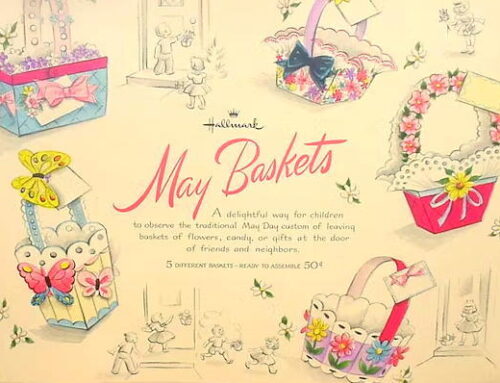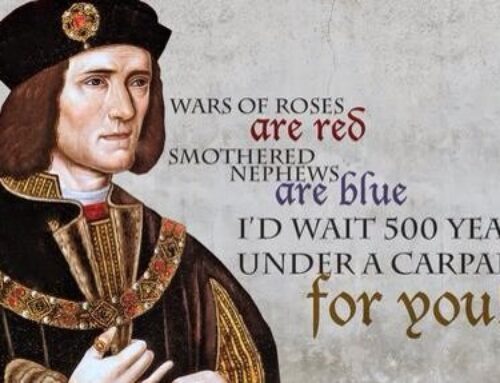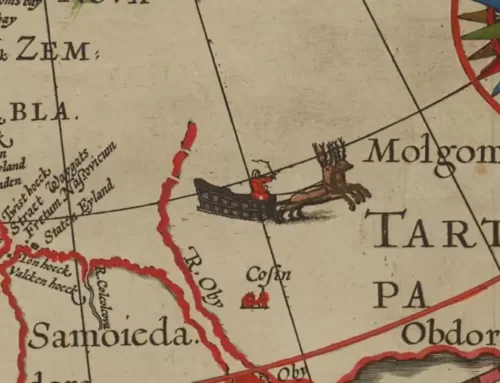Let’s celebrate the first Valentine and some English genealogy in today’s holiday post.
A love letter from 1477 (above) contains the first known use of the word Valentine. In this 500+-year-old love letter, 17-year-old Margery Brews pleads with her betrothed, John Paston, to continue their engagement. Obstacles to the marriage arose because Margery’s parents had refused to increase her dowry. (For a full transcription of the letter, see the end of this post.)
Significance of the First Valentine

Oxnead Hall, the Paston family manor, 1809. Courtesy Norfolk County Council Library and Information Service
So much is known about the family because their correspondence, written between 1422 to 1509, survives.
Cambridge historian Dr Helen Castor notes the importance of Margery Brews’ letter. “One of the wonderful things about this particular letter is that it is so private,” she said. “It gives a real sense of the relationship between a young man and young woman wanting to marry. “Without this letter we wouldn’t know that this was a love match.”
Rest assured: this love story among the gentry in the Middle Ages has a happy ending. John and Margery wed in 1477, despite her parents’ refusal to increase her dowry. The couple had a son, William, in 1479. Margery died in 1495; John in 1503.
MyHeritage found the 16th- and 17th-generation descendants of Margery Brews and John Paston, still living in England.
The Paston Letters
Letters written by the Pastons, a leading Norfolk family, are the oldest private correspondence that survives in Britain. The bulk of the letters are in the British Library; others are held in the Bodleian Library, Oxford, and the Norfolk Record Office.
Of the Paston family itself, a local history website notes,
Clement Paston (d. 1419) – a ‘peasant bondsman’, took advantage of the chaos following the Black Death to buy up land and then send his son – William – to be educated in the law. The story comes to an end in 1732, when the family name dies with the last man to carry the Paston title: William Paston, 2nd Earl of Yarmouth.
Full Text of the First Valentine
Right reverend and worshipful and my right well-beloved Valentine, I recommend me unto you full heartily, desiring to hear of your welfare which I beseech almighty God long for to preserve unto his pleasure and your heart’s desire and if it please you to hear of my welfare I am not in good health of body nor of heart nor shall be till I hear from you, for there knows no creature what pain that I endure and on pain of death I dare not reveal. And my lady my mother has laboured the matter to my father full diligently but she can no more get than ye know of for the which God knows I am full sorry. [paragraph added for readability]
But if that you love me as I trust verily that you do, you will not leave me therefore. For if that you had not half the livelihood that you have for to do the greatest labour that any woman alive might I would not forsake you. And if you command me to keep me true wherever I go, I advise I will do all my might you to love and never no more. And if my friends say that I do amiss, they shall not me hinder so for to do. My heart me bids ever more to love you truly over all earthly thing and if they be never so angry I trust it shall be better in time coming. No more to you at this time but the holy trinity has you in keeping. And I beseech you that this bill be not seen of no earthly creature except yourself and this letter was written at topcroft with full heavy heart. By your own M[argery] B[rews].
So, that’s the story of the first Valentine and some English genealogy. For more posts on St. Valentine’s Day, click here.





Leave a Reply